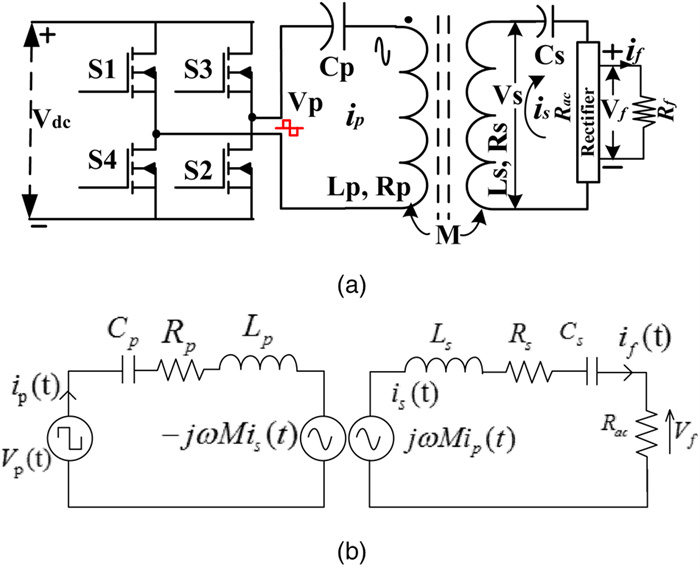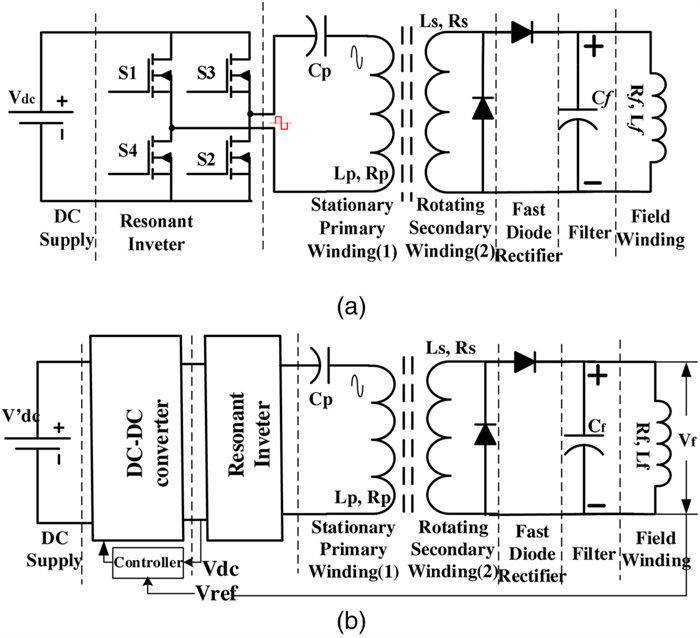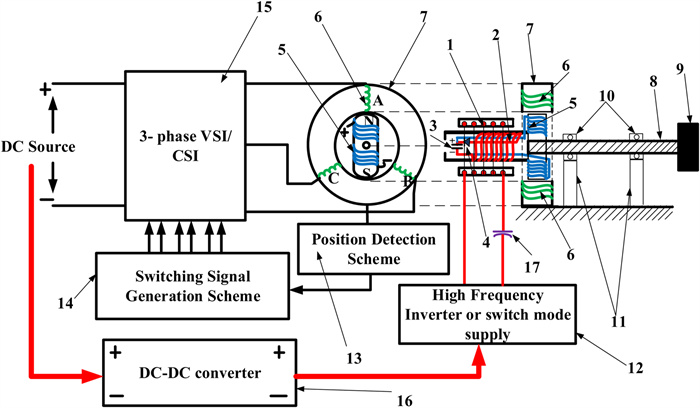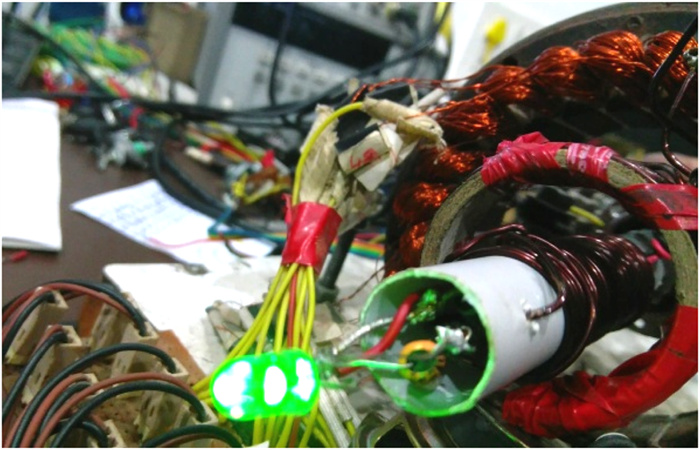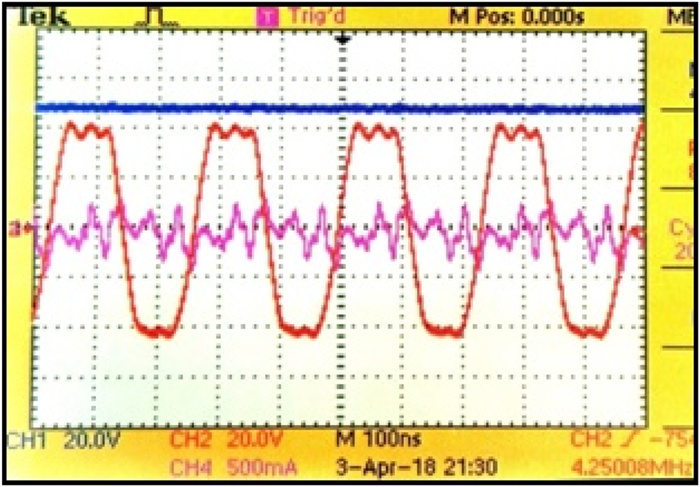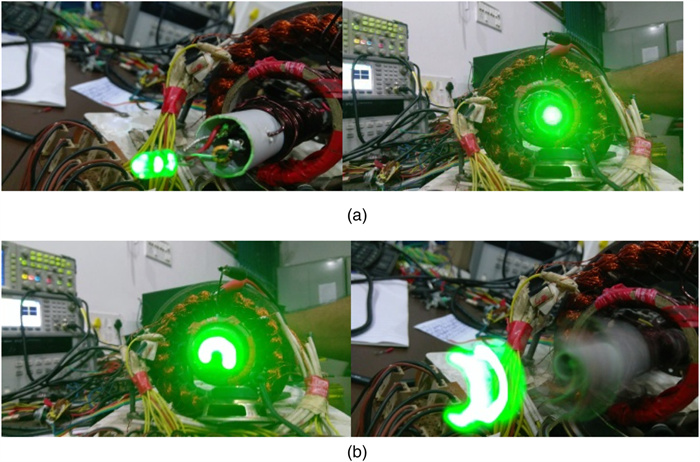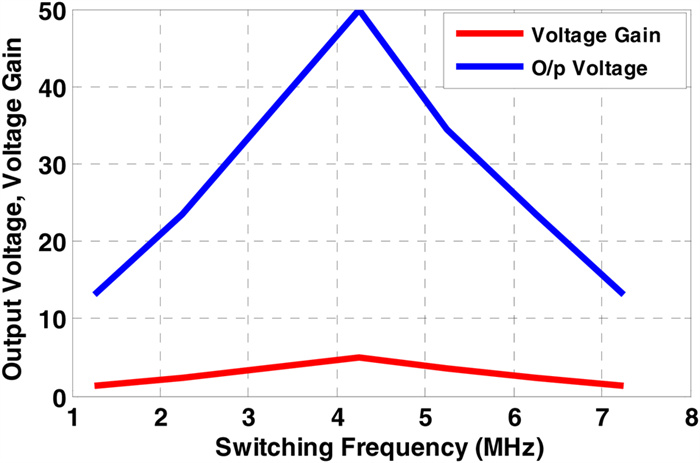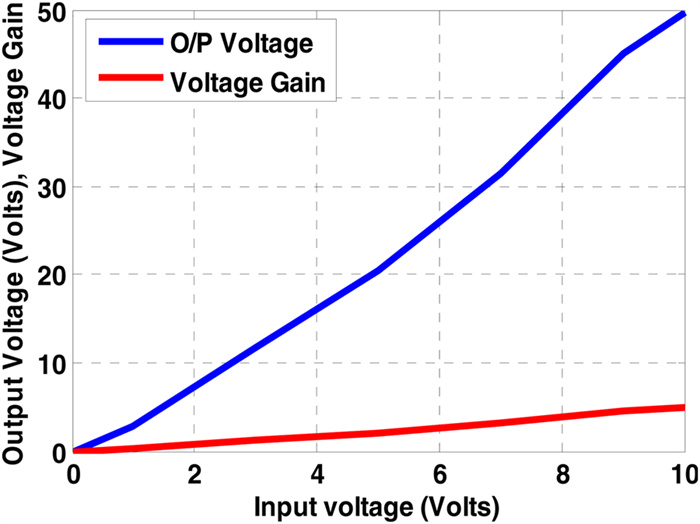-
About this article
Cite this article
Soni U K, Tripathi R K. 2020. A low-power prototype of contactless field power controlled BLAC and BLDC motors. Wireless Power Transfer 7(2): 106-115 doi: 10.1017/wpt.2020.11
A low-power prototype of contactless field power controlled BLAC and BLDC motors
Abstract: In this paper, a new design configuration has been proposed in which a prototype of resonant inductive power transfer-based contactless power transfer to wound rotor has been developed which provides field power to brushless alternating current (BLAC) or brushless direct current (BLDC) motors without the use of permanent magnets in the rotor. Further, wound field in the rotor of DC motor can be powered without carbon brushes. The proposed design facilitates motor performance improvement by adding an extra dimension of field flux control, while the armature circuit is conventionally fed from position detection and commutation schemes. It contains a primary multilayer concentrated coil fed with high-frequency resonating AC supply or switched mode supply. A single layer helical secondary coil coaxially fixed on the shaft receives high frequency wireless AC power transmitted from primary coil. Fast rectifier inside the hollow shaft and DC filter provides the transferred DC power to field terminals in the rotor. It has been verified that rotor power can be varied linearly with linear variation in input DC power with the highest efficiency at the resonant frequency. Available power to the rotor remains invariable with rotational speed and angle, which is a necessary requirement for rotor field. DC voltage on the rotor terminals can be effectively controlled during standstill as well as during rotation at any speed.
-
Key words:
- BLDC /
- brushless /
- field controlled /
- motor /
- synchronous motor /
- wireless power /
- wireless /
- WPT









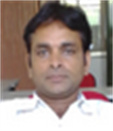 Umesh Kumar Soni has obtained B.E. degree from JEC Jabalpur (MP), India in 2003. He has 3 years of industrial experience and more than 4 years of academic experience. He has completed his M.E. in 2011 in control system specialization from JEC, Jabalpur. Presently, he is purusing the Ph.D. degree from MNNIT Allahabad, India and has just submitted his PhD thesis in July 2020 with specialization in power electronics and drives control. His interests include control, robotics, fuzzy, neuro-fuzzy, image processing, renewable energy harvesting, solar and microbial fuel cells, wind power system, microgrids, power electronic converters control, DC-DC PFC and boost converters, bidirectional converters, multilevel inverters, resonant converters, wireless electricity and high speed superefficient motor control.
Umesh Kumar Soni has obtained B.E. degree from JEC Jabalpur (MP), India in 2003. He has 3 years of industrial experience and more than 4 years of academic experience. He has completed his M.E. in 2011 in control system specialization from JEC, Jabalpur. Presently, he is purusing the Ph.D. degree from MNNIT Allahabad, India and has just submitted his PhD thesis in July 2020 with specialization in power electronics and drives control. His interests include control, robotics, fuzzy, neuro-fuzzy, image processing, renewable energy harvesting, solar and microbial fuel cells, wind power system, microgrids, power electronic converters control, DC-DC PFC and boost converters, bidirectional converters, multilevel inverters, resonant converters, wireless electricity and high speed superefficient motor control. 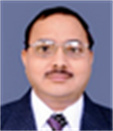 Prof. Ramesh Kumar Tripathi has obtained the Bachelor degree in Engineering from REC Durgapur, West Bengal in 1989, M.Tech. degree from IT-BHU, Varanasi in 1991, and Ph.D. degree from IIT Kanpur in 2002. He is a Fellow IE and a senior member of IEEE. Presently, he is working as a Professor in the Department of Electrical Engineering, MNNIT Allahabad, India. He has about 30 years of academic experience. He has many research publications in journals and conferences of international repute. His research interests are power electronics switch-mode rectifiers and power supplies, high gain DC-DC Converters, renewable energy harvesting, microbial fuel cells, solar and wind energy, microgrids, magnet load power supplies, power factor correction, electrical drives, power quality and active power filters, and virtual instrumentation
Prof. Ramesh Kumar Tripathi has obtained the Bachelor degree in Engineering from REC Durgapur, West Bengal in 1989, M.Tech. degree from IT-BHU, Varanasi in 1991, and Ph.D. degree from IIT Kanpur in 2002. He is a Fellow IE and a senior member of IEEE. Presently, he is working as a Professor in the Department of Electrical Engineering, MNNIT Allahabad, India. He has about 30 years of academic experience. He has many research publications in journals and conferences of international repute. His research interests are power electronics switch-mode rectifiers and power supplies, high gain DC-DC Converters, renewable energy harvesting, microbial fuel cells, solar and wind energy, microgrids, magnet load power supplies, power factor correction, electrical drives, power quality and active power filters, and virtual instrumentation 




